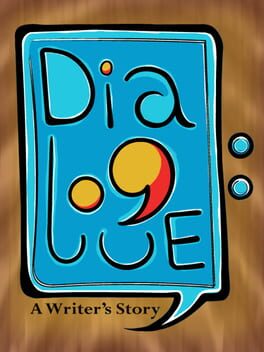

Dialogue: A Writer's Story
released on Sep 20, 2017
Try out different conversation mechanics – Active, Exploratory or Written – in Dialogue: A Writer's Story. Play as the writer Lucille Hawthorne, exploring characters and events through a year in her life via mostly ordinary, and occasionally fantastical, conversations.
Reviews View More
The good:
The game portrays dialogue scenes three different ways: a standard visual novel format, one where you cycle through options to reply to mail, and a maze/adventure structure. I think I can honestly say I've never seen a conversation represented as that last one before. It's easily my favorite of the three.
I also appreciated the constant reminders from the game that nothing is permanently missable and you can go back to collect all the extras later. Because anxiety.
The..... rest:
In part because the depiction of conversation was so novel, it raised serious red flags when it turned out the story was about a writer writing. It's not that you can't have a good story about writing (some would argue it is impossible to truly write about anything else), but it's often a sign that the developers didn't actually know what story they wanted to use this system for. I think that is the case here. The game bills itself as a realistic portrayal of the writing process and although I wouldn't totally disagree with that, I don't get the sense that there was any passion from the (game's) writer for the story-in-the-story.
It also falls into the other common trap with stories about writing, which is that Lucille's book.... kind of sucks? The plot is only discussed in the vaguest terms possible, so it's hard to tell. I found it very difficult to care about the story and its characters. That might be my own bias towards that type of fantasy, where instead of humans the characters are visually distinct humanoid magical creatures for no discernible reason. The game gets defensive about people like me judging it.
Each dialogue system has its own art style. Again, the maze style is the best as each conversation has a unique palette and pattern, and the character drawings are less detailed. At the other end of the spectrum are the visual novel style sprites. Considering also that the credits try to pass off rough drafts as concept art, I'm going to assume the artist is relatively inexperienced.
I want to emphasize though: the (titular?) dialogue systems are very interesting, and I would definitely like to see them used in a stronger story.
The game portrays dialogue scenes three different ways: a standard visual novel format, one where you cycle through options to reply to mail, and a maze/adventure structure. I think I can honestly say I've never seen a conversation represented as that last one before. It's easily my favorite of the three.
I also appreciated the constant reminders from the game that nothing is permanently missable and you can go back to collect all the extras later. Because anxiety.
The..... rest:
In part because the depiction of conversation was so novel, it raised serious red flags when it turned out the story was about a writer writing. It's not that you can't have a good story about writing (some would argue it is impossible to truly write about anything else), but it's often a sign that the developers didn't actually know what story they wanted to use this system for. I think that is the case here. The game bills itself as a realistic portrayal of the writing process and although I wouldn't totally disagree with that, I don't get the sense that there was any passion from the (game's) writer for the story-in-the-story.
It also falls into the other common trap with stories about writing, which is that Lucille's book.... kind of sucks? The plot is only discussed in the vaguest terms possible, so it's hard to tell. I found it very difficult to care about the story and its characters. That might be my own bias towards that type of fantasy, where instead of humans the characters are visually distinct humanoid magical creatures for no discernible reason. The game gets defensive about people like me judging it.
Each dialogue system has its own art style. Again, the maze style is the best as each conversation has a unique palette and pattern, and the character drawings are less detailed. At the other end of the spectrum are the visual novel style sprites. Considering also that the credits try to pass off rough drafts as concept art, I'm going to assume the artist is relatively inexperienced.
I want to emphasize though: the (titular?) dialogue systems are very interesting, and I would definitely like to see them used in a stronger story.
